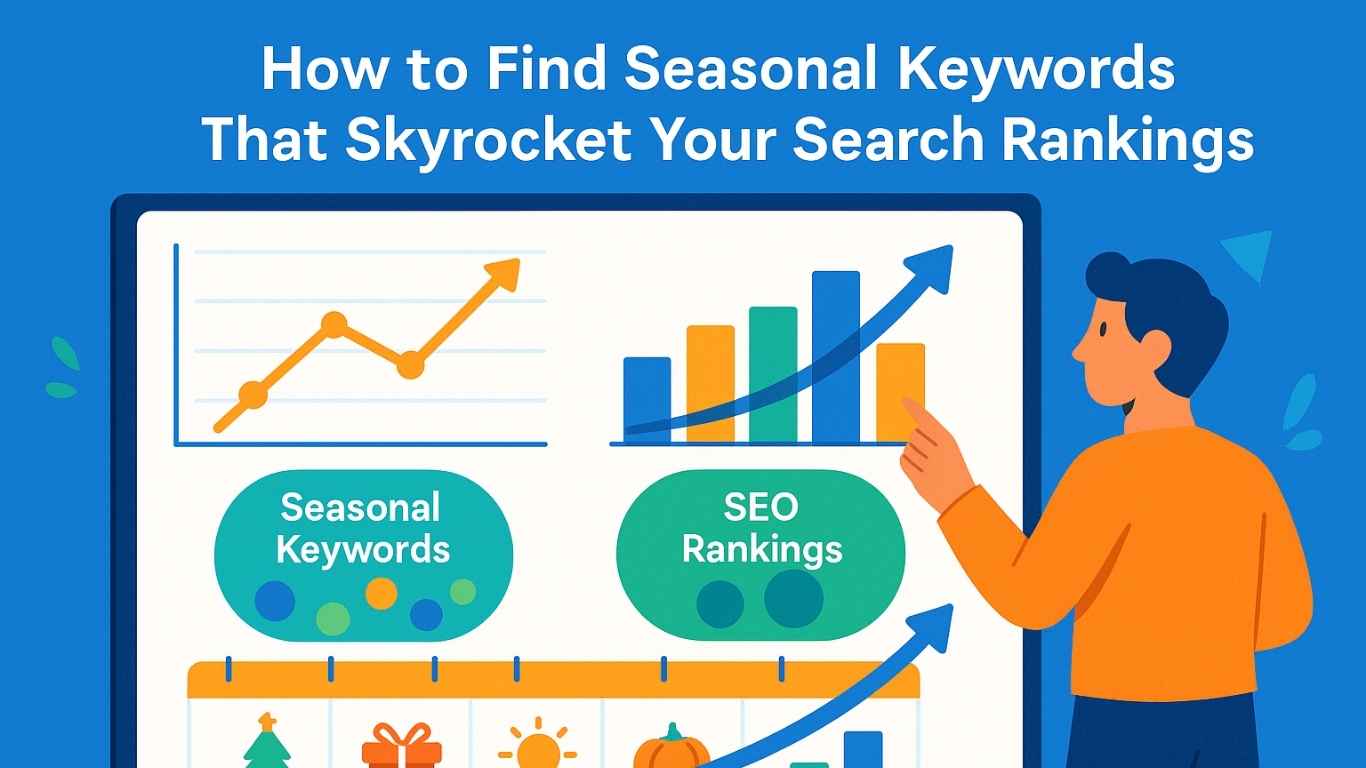Search engine optimization (SEO) isn’t a “set it and forget it” activity. Your audience’s needs change with time, and so do the search terms they use. That’s where seasonal keywords come into play. Understanding how to leverage seasonal trends can give your website a competitive advantage, helping you capture high-intent traffic during peak moments.
This article explores how seasonal SEO works, why it matters for both B2C and B2B businesses, and how you can strategically plan campaigns that ride the wave of seasonal interest.
The Role of Seasonal SEO in Your Overall Strategy
Seasonal SEO refers to optimising your content and keywords around specific times of the year—holidays, events, or industry cycles. Instead of relying only on evergreen content, you intentionally create or update pages to target high-volume search queries that spike during particular periods.
This strategy:
- Drives surges of relevant traffic during peak seasons
- Helps you stay visible when competitors are also pushing campaigns.
- Improves your site’s topical authority by covering time-sensitive topics
By weaving seasonal SEO into your broader plan, you can enjoy a steady base of evergreen traffic while capitalising on predictable bursts of demand.
What Exactly Are Seasonal Keywords?
Seasonal keywords are search phrases that experience a significant increase in search volume during specific times of the year. These can be tied to:
- Holidays: “Diwali decoration ideas,” “Christmas gift deals”
- Weather changes: “monsoon skincare tips,” “summer travel destinations”
- Industry-specific cycles: “tax filing checklist,” “Black Friday SaaS discounts”
Unlike evergreen keywords that remain stable all year, seasonal keywords follow patterns based on cultural, regional, or economic events.
Why Seasonal SEO Works for Both B2C and B2B
Many assume seasonal keywords only matter for consumer-facing businesses, but B2B brands can benefit as well.
For B2C
- Retailers can promote holiday sales (“best smartwatches for Valentine’s Day”).
- Travel agencies can target vacation seasons (“affordable summer trips to Europe”).
For B2B
- Software companies can run campaigns around fiscal year-end (“best accounting software for tax season”).
- Training institutes can align with admission cycles (“top digital marketing courses for 2025 batch”).
Seasonal SEO allows you to meet decision-makers when they’re actively planning, regardless of whether they are consumers or professionals.
Planning Your SEO Strategy with Seasonal Keywords
Winning seasonal traffic isn’t just about publishing content in December or June. It requires foresight and careful planning. Here are the key steps:
1. Identify the Right Seasons for Your Niche
Not every season will matter to your business. A fitness brand might focus on “New Year workout plans,” while an education platform might target “back-to-school” periods. Map out annual events, holidays, or recurring trends that align with your offerings.
2. Start Early for Maximum Impact
Search engines need time to crawl and rank your content. Aim to publish at least 6–8 weeks before the peak. For instance, launch Christmas-related blogs by early November or summer sale pages by mid-April. Early action gives your pages enough time to climb search rankings.
3. Use SEO Tools to Spot Seasonal Trends
Keyword research tools like Google Trends, SEMrush, Ahrefs, or Ubersuggest can reveal when search volumes rise and fall. Look for patterns over the last 2–3 years to predict upcoming peaks.
Tip: Enter your competitor URLs into these tools to uncover the seasonal keywords they rank for, then create richer, more useful content around similar queries.
4. Analyze Your Internal Data
Check your Google Analytics, Search Console, or CRM for historic spikes in traffic or sales. Your past performance is often the best indicator of future opportunities.
5. Know Your Audience’s Intent
Different keywords reflect different types of intent:
- Informational: “How to choose winter jackets”
- Transactional: “buy waterproof hiking boots online”
- Comparative: “best vs. budget skincare for summer”
Match your seasonal keywords to the exact intent to increase conversions.
6. Create Content for Each Peak Period
Develop dedicated landing pages, blog posts, or product collections for every important season. For example:
- “Step-by-Step Guide to Filing Taxes in 2025”
- “Top 10 Wedding Decor Trends for Summer”
Use long-tail keywords (e.g., “best eco-friendly Christmas gifts under $50”) to capture highly qualified leads.
Pro Tips to Maximize Seasonal SEO Performance
- Refresh Evergreen Pages: Update existing content with seasonal sections or limited-time offers to maintain relevance.
- Optimize Meta Tags: Include seasonal keywords in titles and descriptions to improve click-through rates.
- Build Internal Links: Connect your seasonal content to evergreen pages to share link equity and help users navigate.
- Promote Across Channels: Combine SEO with email marketing, social media, and paid ads for stronger reach.
- Monitor & Adjust: Track rankings daily during the peak season and tweak your strategy for next year based on results.
Conclusion
Seasonal keywords are more than just a short-term tactic, they’re a smart way to align your SEO strategy with real-world trends. By planning early, researching carefully, and creating valuable, intent-focused content, you can capture bursts of traffic that translate into measurable growth.
Whether you’re selling consumer products or B2B solutions, integrating seasonal SEO ensures your brand stays visible when it matters most. Start mapping your calendar now, and let the seasons drive your next big win.
FAQs
No. Any industry with cyclical demand education, finance, SaaS, travel can benefit from targeting seasonal search trends.
Ideally 6–12 weeks before the peak, depending on how competitive the keyword is.
Yes. Update the content, refresh the date (e.g., “Best Summer Gadgets 2025”), and maintain the same URL to keep existing backlinks and authority.
Use Google Analytics and Search Console to monitor traffic spikes, keyword rankings, and conversion rates during and after the season.

